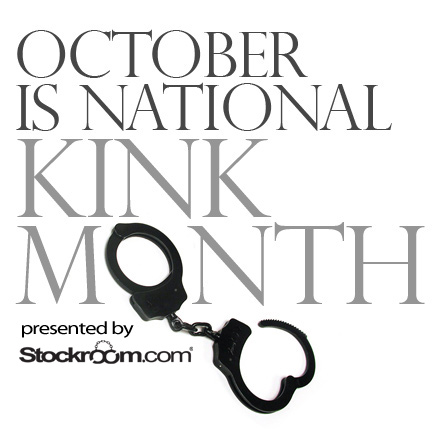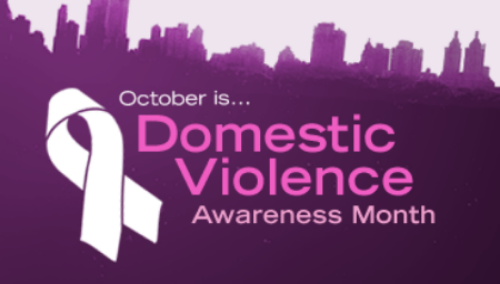 October brings a lot of things with it: Besides Halloween and candy, it’s both National Kink Month and National Domestic Violence Awareness Month. In some ways, the two couldn’t be more different: Kink is a form of mutual pleasure, while abuse is a way of non-consensually controlling and harming another person.
October brings a lot of things with it: Besides Halloween and candy, it’s both National Kink Month and National Domestic Violence Awareness Month. In some ways, the two couldn’t be more different: Kink is a form of mutual pleasure, while abuse is a way of non-consensually controlling and harming another person.

Unfortunately, one of the greatest myths about kink is that it is inherently abuse. While it’s true that sometimes kinky relationships become abusive just like any other, there is a very distinct difference between kink and abuse. We thought that this would be an excellent time to talk about that difference, and how to help yourself or others when that line is crossed.
What is the Difference Between BDSM and Abuse?
Even though kinky play often involves physical punishment, humiliation and tears, there are key differences between BDSM and abuse:
- An abusive episode is an out-of-control situation. In BDSM scenes, a good dominant does not spontaneously act out of anger. A dominant pre-plans activities and proceeds with thought, care, and always acts in best interest of the submissive.
- In an abusive situation, the abuser acts without permission and does not give the victim any control over what is happening to them. In BDSM scenarios the submissive always gives consent for every act. Each scene is negotiated before it starts and the submissive can stop actions at any time through use of a safeword or signal.
- Abusive situations conclude with the target feeling bad and the aggressor feeling bad or sorry. The goal of a BDSM scene is for everyone involved to feel good when it’s over. It is a dominant’s responsibility to make sure their sub feels safe, secure, and happy either while the scene is in progress and/or in the aftercare phase.
- Abusive situations often involve substance abuse or emotional impairment. It is best to not consume alcohol or drugs in order to minimize factors that may affect judgment during play.
The main thing that distinguishes BDSM from abuse is that abuse is based on intimidation and force. BDSM is safe, sane and consensual play that has been negotiated between partners.
- Safe means being knowledgeable about the techniques used and taking all necessary steps to minimize physical and mental risk.
- Sane means that all partners are of sound mind and can differentiate fantasy from reality.
- Consensual means obtaining the informed consent of all parties involved both before and continually during play.
When constructing a scene, the participants spend a great deal of time planning, anticipating pitfalls and considering safety issues. During play the dominant constantly monitors the submissive/s to make sure everything stays with the confines of safe, sane, and consensual play. To someone observing an S&M scene from the outside, however, this very controlled situation can look like violent chaos.
Abusive Red Flags
BDSM relationships and scenes conducted properly are enriching experiences for all parties involved. They enhance intimacy, trust, and love between partners and foster personal growth. Abuse can, however, still occur within the context of a kinky relationship or scene. The red flags in an abusive BDSM relationship are similar to those in any type of relationship. Some warning behaviors are:
- Non-negotiated verbal and physical abuse
- Excessive jealousy and controlling behavior
- Ignoring sexual boundaries/rape
- Unpredictable “Jekyll and Hyde” personality
- Using fear and ultimatums as a means of control
- Substance abuse
- A history of violent behavior with close contacts
- Isolating the victim from friends and family
If you are being abused, remove yourself from the situation and get help immediately. If abuse happens during public play seek out a Dungeon Monitor (DM) or get the attention of someone nearby.
During a private play date, let someone know your whereabouts and establish a safe-call with a friend. Before meeting a new partner, secure personal references from previous play partners and others in the community.
If you are in an abusive ongoing relationship seek outside help. In addition to setting up a support system of friends and family, solicit the services of a kink-friendly therapist (the National Coalition for Sexual Freedom has a kink-friendly professionals contact list), abuse support service, or call The National Domestic Violence Hotline at 1-800-799-SAFE. They also offer an online chat service. If you are in immediate danger contact the police.
Rape Culture in the Kinky Community
Rape culture is the concept that a victim of sexual abuse brought the situation upon themselves through their actions, style of dress, or other means. In addition to victim-blaming, rape culture glamorizes and trivializes sexual assault. Although the BDSM community prides itself on awareness, communication, and consent, it still has its own version of rape culture.
It isn’t uncommon to hear someone who has been abused during an S&M scene called a drama monger or accused of being unable to handle the emotional complexities of intense play. Often the situation is brushed off as a miscommunication or called a “scene gone wrong.” The dismissive nature of the abuser or outsiders who don’t want to get involved may cause the target to second guess the situation and question if they really were abused. Some victims of abuse avoid going to authorities because they find some professionals aren’t well educated about the differences between abuse and BDSM.
If you or someone you know find themselves in this position, listen to your gut about what to do. Relationships are tricky from the outside; lifestyle BDSM relationships have even more shades of grey. Use the same set of rules for solving abuse in others as you would for yourself. If something doesn’t feel right, it likely isn’t. Seek the support of those in the BDSM community or a kink-friendly therapist. If you are unsure how to proceed, seek professional help.
Be a part of a support system for the abused and help them set up other resources to rely on if and when they end the relationship. Factually point out the negative behaviors that worry you. Don’t overwhelm them. Give the abused time to process what you are saying. Let them know you are there to talk to when they are ready and put the power back in their hands.
Abuse can exist in any community, relationship, or situation. Although BDSM is not a form of abuse, abusive situations can occur within the confines of kinky play. Learn to recognize the signs and familiarize yourself with what you should do if you or someone you know is a target.






[…] all clear on the profound differences between BDSM/kink and abuse, yes? How they are in no way the same thing? Okay! Glad to hear […]